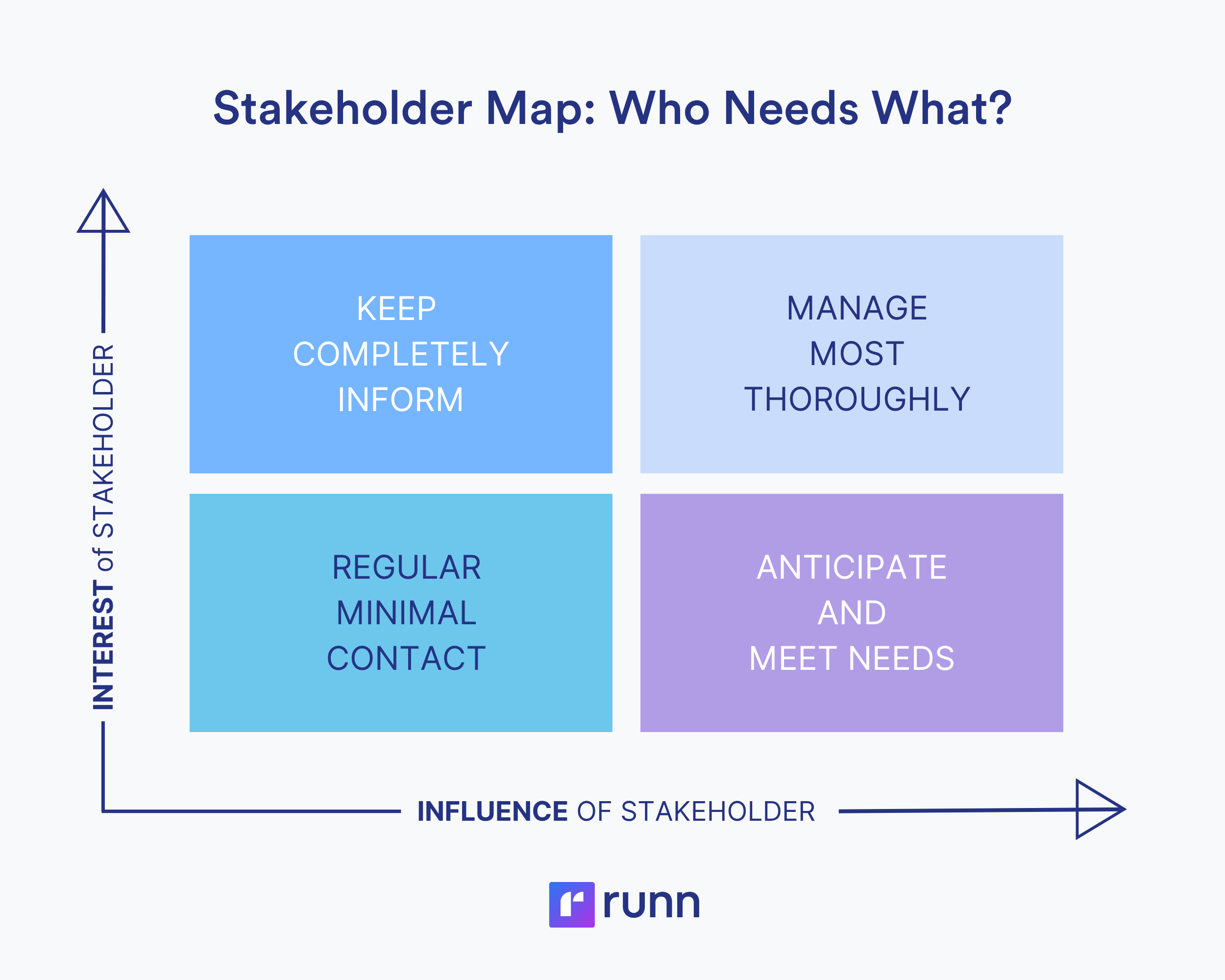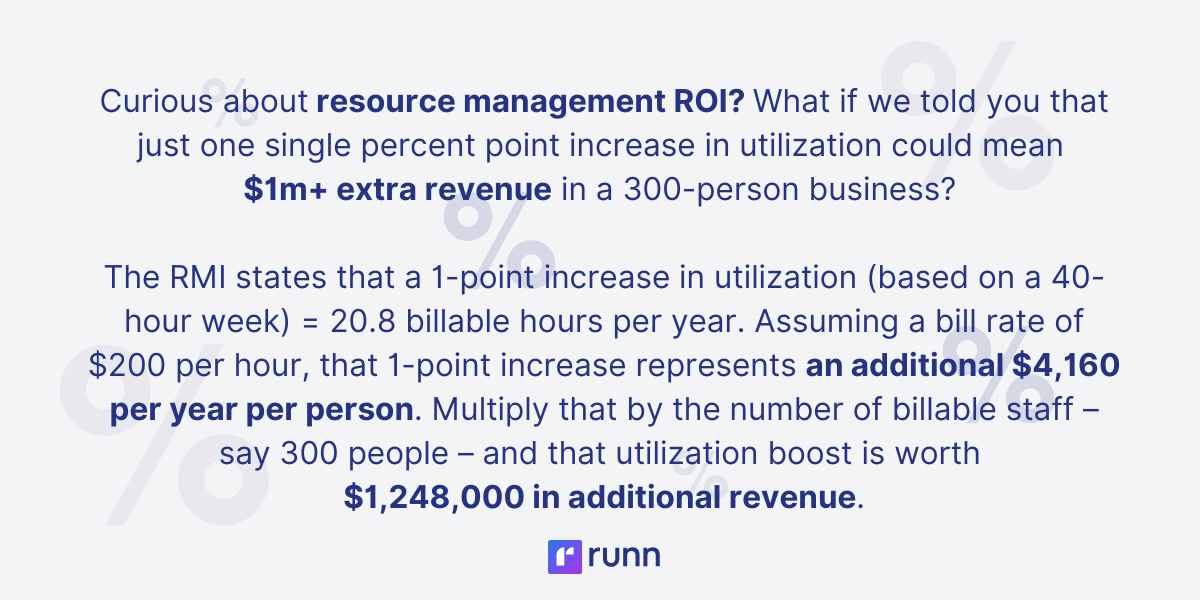Why are people so resistant to resource management? From leaders to teammates, discover common reasons and strategies to overcome them.

Effective resource management can significantly improve efficiency, profitability, and make life better for project teams – so why do so many organizations resist it?
For resource managers, resistance can be extremely frustrating. You’ve got the tools to make the business more profitable, increase job satisfaction in the workforce, and boost your reputation with clients. But you seem to have more skeptics than supporters.
Understanding the root causes of resistance to resource management will help. Equipped with empathy and effective strategies, you can win hearts and minds – getting buy-in from leaders and teammates alike.
Resistance to resource management usually stems from fear or skepticism of the unknown. It’s a relatively new discipline in many organizations, and talk of ‘utilization rates’ and 'time tracking’ can feel unfamiliar or even threatening.
Change is always unsettling and new initiatives need careful change management. One of the most useful tools is stakeholder mapping. This helps you understand who’s affected, how much influence they have, and what kind of engagement they need.

For the purpose of this article, we’ll be focusing on the key stakeholders involved when you're introducing or developing resource management in a business:
Resistance from leadership is likely to be practical rather than emotional. They may view resource management as an additional cost and layer of bureaucracy, expecting it to slow things down and eat into profits.
These concerns arise from a desire to protect business performance and avoid unnecessary disruption – as well as a lack of understanding about the strategic benefits of better resource management.
By framing resource management as a strategic asset – not an operational burden – you’re more likely to gain their support. Money talks with this audience, so a clear business case is also important.
Leaders often don’t always ‘get’ resource management, so you’ll need to help them. Explain that resource management isn’t just about scheduling. It’s a strategic tool for improving margins, reducing risk, and meeting demand effectively – plus it supports better forecasting, hiring, and decision-making.
And no, it’s not HR!
HR tracks people; RM tracks how those people are optimized to deliver business outcomes.
Use hard facts and stats data to show what success looks like. The Resource Management Institute’s ROI calculation is a great place to start, showing over $1m revenue gain in a 300-person business. Real-world case studies can provide evidence too. When leaders see that better resource use leads to higher billable utilization, they’ll get on board faster.

Further reading: Learn more about resource management ROI ➡️
Propose a low-friction pilot to demonstrate the benefits of better resource management. This pilot acts as a proof of concept, demonstrating tangible benefits without disrupting critical operations. Use the pilot to gather feedback, refine your approach, enlist champions for the process, and generate positive stories that you can share more broadly.
Resistance from managers is likely pragmatic and related to workload, though some emotions may come into play. Possible concerns include additional responsibilities and loss of control.
While some of these concerns will be based on experience of failed initiatives, resource management will soon start to deliver benefits – like less manual work, higher efficiency, and more time. The key here is talking through the benefits of resource planning, evidencing it with case studies, and sharing quick wins when they start happening.
Managers are often stretched thin and stressed out, so, understandably, they’ll be worried about more work for little benefit.
Be upfront about what they’ll need to do, but also what they’ll gain. Yes, they will need to learn new processes and do things differently. But that should improve their workload overall, replacing firefighting and reactivity with control and clarity.
Change can be especially hard for managers, stuck between top-down directives and bottom-up support needs. So it’s really important to help them feel confident with new processes, so they can cascade that support to others. Provide thorough training. Let them know your door and inbox are always open for any ongoing challenges. Reassure them that you’ll make tools and processes as easy as possible. And consider weekly or monthly drop-in clinics to solve problems that come up.
Centralized resource management can mean formerly team-based resources being allocated to different projects – and managers may fear losing ‘their people’. However, it’s a reciprocal thing. Managers are just as likely to get high-performers from other teams as they are to’ lose’ them. It’s about building the most appropriately skilled team for each project to deliver stronger outcomes, and everyone benefits from that.
Resistance from team members is more likely to be an emotional response to change. They could be worried about loss of control, surveillance, and even losing their job. It’s important to approach these stakeholders with empathy and understanding, providing clarity and reassurance.
These concerns are all legitimate and may stem from negative past experiences. The key is to listen, understand, reassure, and rebuild trust. Your aim is to educate them on the real role of resource management – as a support tool, not a surveillance system.
Reassure team members that resource management is about monitoring workloads and utilization, not them. Emphasize that the aim is to optimize their work and protect them from burnout and boredom, so their work is manageable and more enjoyable.
Highlight how RM helps you match them to opportunities that will interest them more, and provide them with development opportunities too.
People hear terms like ‘utilization’ and ‘redundancy’ and fear the worst – then the whispers start – and before you know it, everyone is expecting layoffs. Acknowledge these concerns openly and explain that resource management aims for the very opposite. By improving capacity management, workforce planning, and skills tracking, resource management is actually an alternative to layoffs.
If teammates are worried that resource management will mean more work for them, they don’t need to. Let them know what it will entail for them – for example, recording their skills and keeping them updated quarterly, tracking their time – and explain how a more balanced workload and optimized utilization should make this easier to accommodate. With careful management, you can introduce things like time tracking without alienating employees.
Introducing resource management into an organization can feel like a big ask, but with the right approach, you can make the transition smoother and more successful. During our webinar series, we’ve spoken to lots of experts who have plenty of advice and best practices for overcoming resistance to resource management. Here’s what they suggest.
Before rolling anything out, go on a listening tour – listening to your stakeholders, so you can understand their needs, what success would look like for them, and any potential obstacles. This approach helps you build a resource management approach that’s truly tailored to business needs, increasing the likelihood of buy-in and long-term success.
Christine Robinson, former Managing Director of Resource Management at Baker Tilly, spoke on this specific benefit in a recent webinar:
I traveled around to the different offices and truly just listened. I asked questions about what people thought about resource management. It was eye-opening to hear from people what they think the (resourcing) process is about, what they think it should be, where improvements could be made, what the challenges were.’
Equipped with your laser insights into business and stakeholder needs, you can write a tailored value proposition for resource management, showing exactly what RM can bring to the business and individual teams. This will help secure that all-important leadership buy-in, which, in turn, helps champion any new initiatives throughout the organisation.
Christine Robinson says:
Your job isn’t to “sell” resource management. Your job is to understand the process deeply enough that you can articulate how goals can be achieved through the process that you bring to the table. A value proposition for resource management is painting the picture for leadership of how the resource management function is going to benefit the organization and align with whatever their strategic objectives are.'
Once you've started building connections and gathering input, look for insights you can share early that demonstrate the value of resource management. These don’t need to be complex or technical. Spotting a capacity crunch on the horizon or identifying an underutilized skill set can be enough to get leadership’s attention.
Martha Arias, Senior Director of Resource Management at Jobs for the Future, explains:
If you’re able to surface insights as an RM that no one's seen yet – for instance, if we have a resource shortage coming up in three months – you're gonna win a lot of support immediately. The leaders start saying, “Wow, they know something that we don't, we should be listening to this”.’
Ultimately, one of the most effective ways to overcome resistance is to make resource management as simple and seamless as possible. When the process feels intuitive and the benefits are visible, adoption gets a whole lot easier.
The right resource management software plays a huge part in this, providing clear visibility, reducing admin, and easing adoption with minimal learning curve.
Check out our buyer’s guide to resource management software for 2025.
Start your 14-day free trial of Runn today. Pop in your team data and see what insights you can surface.